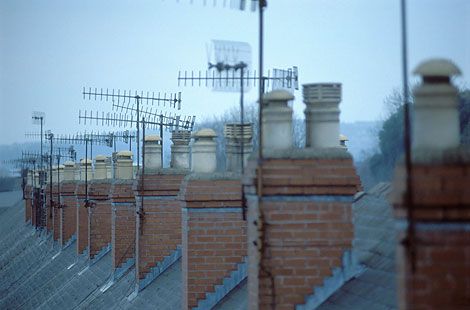 A fireplace can supply charm, and then it is active it can provide lots of warmth. Whether it is active or inactive the chimneys can be responsible for letting drafts and debris into the house. In contemporary homes, it’s common to find a glass cover with doors across the fireplace opening. In older homes, you might see a cast iron or metal “summer front” in that spot. As the name implies, summer fronts traditionally were used in warm months when chimneys were dormant. They would be removed in cold weather.
A fireplace can supply charm, and then it is active it can provide lots of warmth. Whether it is active or inactive the chimneys can be responsible for letting drafts and debris into the house. In contemporary homes, it’s common to find a glass cover with doors across the fireplace opening. In older homes, you might see a cast iron or metal “summer front” in that spot. As the name implies, summer fronts traditionally were used in warm months when chimneys were dormant. They would be removed in cold weather.
A Metal Chimney
Over the time, the fireplace is also deteriorated. A sign shown when the old mortar from the chimney is deteriorated is the dust comes from the mortar falling off inside surface of the brick. Another sign of a drafty chimney are various, here are some of them. Fire is reluctant to start and smoke spills into the room at start-up.Some chimneys perform adequately only after the first 30 to 60 minutes of burning. Stove back puffs powerfully on windy days. In addition to that, the smoke spills to some degree under all conditions.It may also involve smokespills at larger, damper openings. Another sign is heat output is too low. If, in spite of a wide-open damper, the wood burner doesn’t become very hot. Last but not least, smoke odors are persistent, even when the stove isn’t in use.
To stop up a drafty fireplace, access the lower chimney behind your summer front (or glass fireplace cover) and install an inflatable product such as a Chimney Balloon. It’s an inexpensive plastic device, which will block downdrafts and prevent debris from accumulating on hearths. You inflate it as you would a balloon, placing it at arm’s length inside the flue (where the smoke from the fire would have gone). It can be reused by deflating and re-inflating during chimney maintenance.
By placing chimney cap, it will also help to reduce the drafty chimney. The cap does not typically serve as an air seal. Instead many are designed to accommodate airflow through a mesh screen. So the best defense against unwanted drafts is to use both the cap and the flue-blocking balloon.
Another thing that can be done to block the mortar dust coming off the chimney wall, try this inexpensive solution: paint on a waterproofing product, such as clear Olympic Waterguard Multi-Surface Waterproofing Sealant. The product successfully binds to a variety of surfaces (brick, wood, plaster) and offers a low-sheen seal, which prevents the dust from falling onto your mantel or hearth. It’s much milder than paint and doesn’t discolor or obscure the look of old plaster or old brick beneath it.
Sealing the drafts will cut your utility bill, and a little sheet-metal work accompanied by some heat-resistant caulk will make the house more fire-resistant. First, deal with the draft. Spray foam is great for sealing drafts, but that doesn’t mean it’s also suitable for sealing against the chimney.
However, it is worth to note that In most cases, you shouldn’t use standard foam insulation to seal and insulate against a sheet metal chimney, or a masonry chimney for that matter. There are special foams for this, but unless you’re sure that they are permitted where you live, you’re better off sealing the air gap between the chimney and floor joists using sheet steel or aluminum flashing. This horizontal air seal is known as fire blocking or draft stopping, and it prevents the spread of fire between floors by sealing air spaces that permit its passage.
Once the metal is in place, seal the remaining gap between the metal’s edge and the chimney with a thin bead of high-temperature silicone caulk.
Finally, prepare for adding insulation (foam or additional fiberglass batts) by installing a second piece of vertical sheet metal that provides a 2-inch airspace around and parallel to the chimney. This barrier must be taller than any insulation is deep to prevent insulation from touching the chimney.
There are exceptions to this procedure. In some cases, a sheet-metal chimney that passes through an attic is already surrounded by a protective sleeve that provides the needed airspace. Also, it is also recommended to the 2-inch air gap is generous in some forms, and for the insulated metal chimney, it only requires a 1-inch airspace. However, if there is no certainty on the type of chimney, it is better to use a 2-inch airspace.



